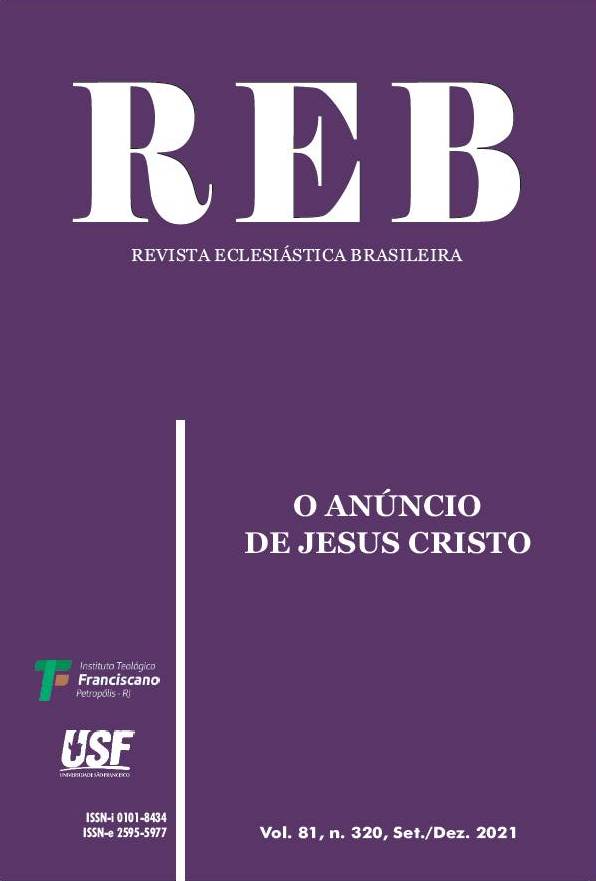A mensagem das bem-aventuranças no contexto dos evangelhos de Mateus e Lucas e em relação ao núcleo do ensinamento de Jesus
DOI:
https://doi.org/10.29386/reb.v81i320.3539Abstract
Compreender o que Jesus expressou no discurso da montanha, impropriamente chamado de “Sermão”, particularmente nas bem-aventuranças, é se aproximar do núcleo do cristianismo. Este artigo faz uma abordagem desses textos bíblicos que se encontram em Mateus (5,1-12) e em Lucas (6,20-26). Nas bem-aventuranças, o pensamento de Jesus é apresentado com uma estrutura interna que remete à essência da lógica do próprio cristianismo – um estilo de vida e uma coerência de caminho de vida, da qualidade da existência que Jesus veio instaurar, que é a lógica do amor. Conclui-se que as bem-aventuranças apresentadas por Jesus devem ser compreendidas como sendo fruto da experiência de fé no seu ensinamento, concretizando a proposta de um novo modelo de existência que responde à verdadeira grandeza humana, cuja consequência será a felicidade. Relatadas pelos dois evangelistas, embora não de forma idêntica, são portadoras de uma mensagem simultaneamente teológica e cristológica, um ensinamento que pede a transformação do agir e do pensar do cristão.
Abstract: To understand what Jesus expressed in The Speech on the Mount, improperly called a “Sermon”, particularly in the Beatitudes, is to approach oneself to the core of Christianity. This article makes an approach of the biblical texts that are found in Matthew (5, 1-12) and in Luke (6, 20-26). In the Beatitudes, the thought of Jesus is presented with an internal structure that refers to the essence of the logic of Christianity itself – a lifestyle and a coherence of the way of life, of the quality of existence that Jesus came to establish, which is logic of love. One concludes that the Beatitudes must be understood as the result of the experience of faith in his teachings, making concrete the proposal of a new model of existence that responds to true human greatness, which its consequence will be happiness. Reported by the two evangelists, although not identical, they are bearers of a message that is both theological and Christological, a teaching that calls for the transformation of Christian action and thinking.
Downloads
Downloads
Pubblicato
Come citare
Fascicolo
Sezione
Licenza
Copyright (c) 2021 Revista Eclesiástica Brasileira

TQuesto lavoro è fornito con la licenza Creative Commons Attribuzione 4.0 Internazionale.
Os autores cedem os direitos autorais; como gratificação, a REB oferece dois exemplares ao Autor de um artigo.
A REB adere à licença não comercial (Creative Commons). Portanto, é permitida cópia, distribuição e exibição dos textos, respeitados os direitos autorais e citada a fonte de sua proveniência.


